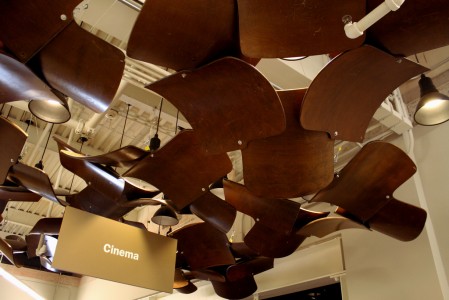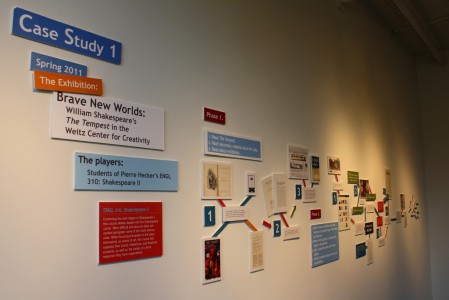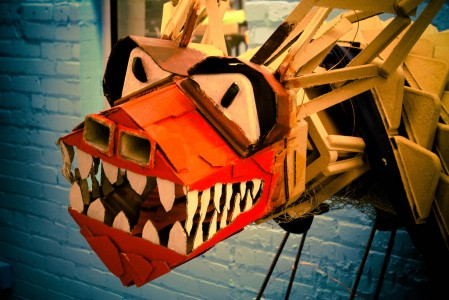Highlights from Carleton College’s Visual Learning Conference (Part 3)
Carleton College’s Visual Learning Conference was one of the most interesting and unusual conferences I’ve attended. As I noted in my first post about the conference, the incredible diversity of disciplines represented at the conference led to some useful exchanges of ideas across traditional academic boundaries. And as I noted in my second post, the beautiful Carleton College campus was a stimulating setting for the conference.
Also stimulating was the Weitz Center for Creativity, where most of the conference sessions were held. The Weitz Center houses Carleton’s theater & dance department and its cinema & media studies department, along with art studios, art galleries, a cinema, a museum. It’s in a beautiful 1910 school that served as Northfield’s middle and high school before being renovated by Carleton. The school’s architecture was retained, with its split levels and natural light, and some of the school’s furnishings have been repurposed, including seats from the school auditorium, which now decorate the ceiling outside the cinema.
I spent an hour exploring the Weitz Center and was struck by the exhibits sprinkled throughout the building. One of my favorites was a collection of objects created for a math course on surfaces, including the crocheted hyperbolic annulus seen here:
From the online version of the exhibit:
This crocheted surface is a model of the hyperbolic plane. As you move outward from the first row, the rows of stitches lengthen by a few stitches each time, causing the fabric to spread out in ruffles. The hyperbolic plane spreads out in just this way, as you move outward from any given point.
What a clever way to help students understand a very abstract mathematical concept.
Another impressive exhibit at the Weitz Center focused on experiments in teaching. Two experiments were featured, a Shakespeare course in which students created objects and labels for use in an exhibit on Shakespeare, and a collaboration between a literature course and a photography course in which students created portraits of characters from 19th century novels. Not only were these two teaching experiments great examples of asking students to be producers, not just consumers, of information and ideas, but the exhibit itself was a refreshing way to share these teaching experiments with the campus. I love that Carleton uses gallery space for this!
Since I’ve started collecting photographs of learning spaces over on Flickr, I was looking forward to seeing what classrooms in this building were like. They were fairly traditional, except for the use of my favorite educational technology: wheels on furniture. As someone who prefers chalkboards to dry erase boards, I was happy to see the school’s beautiful chalkboards still in use.
I’ll share one more photo, noting that you never know what you’ll find around the corner in a center devoted to creativity:
Another interesting feature of the Visual Learning conference was the sharing that occurred before the conference even started. Conference participants received biweekly newsletters highlighting various aspects of the conference, including resources shared in advance by conference presenters. Much of this content also appeared on the conference blog (or conference Tumblr, if, like me, you can’t quite think of Tumblr as a blogging platform). Thanks for these conference “warm ups” goes to program coordinator Aisling Quigley, who has continued to post interesting visual learning resources on the blog since the conference. Aisling ran the conference Twitter account, too, gamely jumping into the Twitterverse for the first time just the day before the conference started! I appreciate that the community-building and resource-sharing fostered by this conference wasn’t restricted to the three days of the conference itself.
In my next (and last) conference blog post, I’ll share a few highlights (and sketchnotes) from a great session titled “Presentations and Pedagogical Modes: From PowerPoint to Prezi.”




